There is no doubt that some cars have a capacity to recall a time and a place in history better than any other man-made object and the original Ford Mustang is no exception. It symbolises a period of American history, instantly transporting the onlooker back to another era: in this case 1969 and the location is a modest industrial building in Torrance, California, home of the Shelby Racing Company.
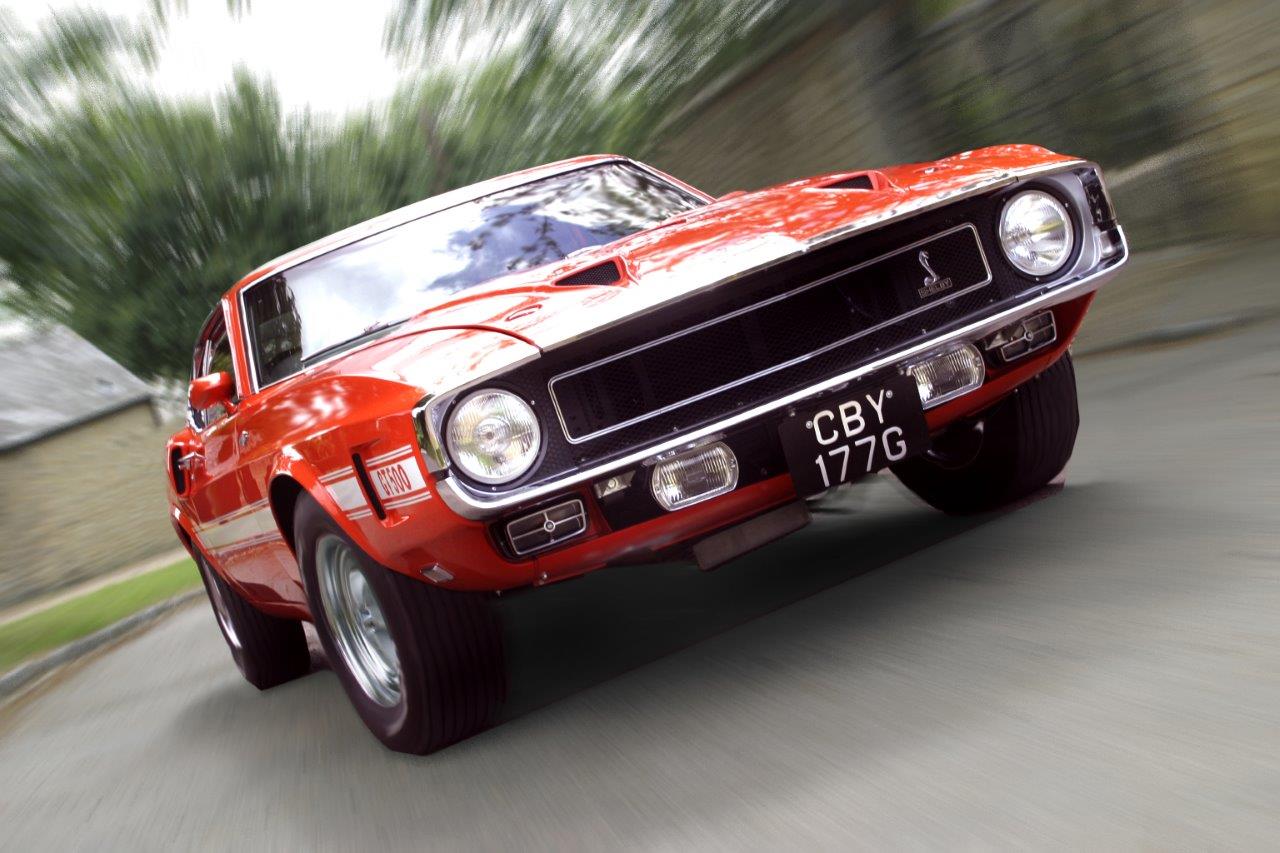
A tall tanned Texan leaves his office, where the phone never stops ringing, and strides purposefully into the blazing summer sunshine en route to another business meeting at a local restaurant. He pops open wide door of his company car, drops into the seat and clicks the lap belt into place before firing the engine into life. The T-handle snicks into ‘drive’, the nose of the bright orange GT500 Shelby Mustang lifts under acceleration and, with a slight chirp from the Polyglas GT tyres, Carroll Shelby has left the building. The car in the photographs is that same Mustang, chassis number 3162, that rolled off the production line in Michigan, painted Grabber Orange, and was shipped to California at the end of July for the personal use of Mr. Shelby.
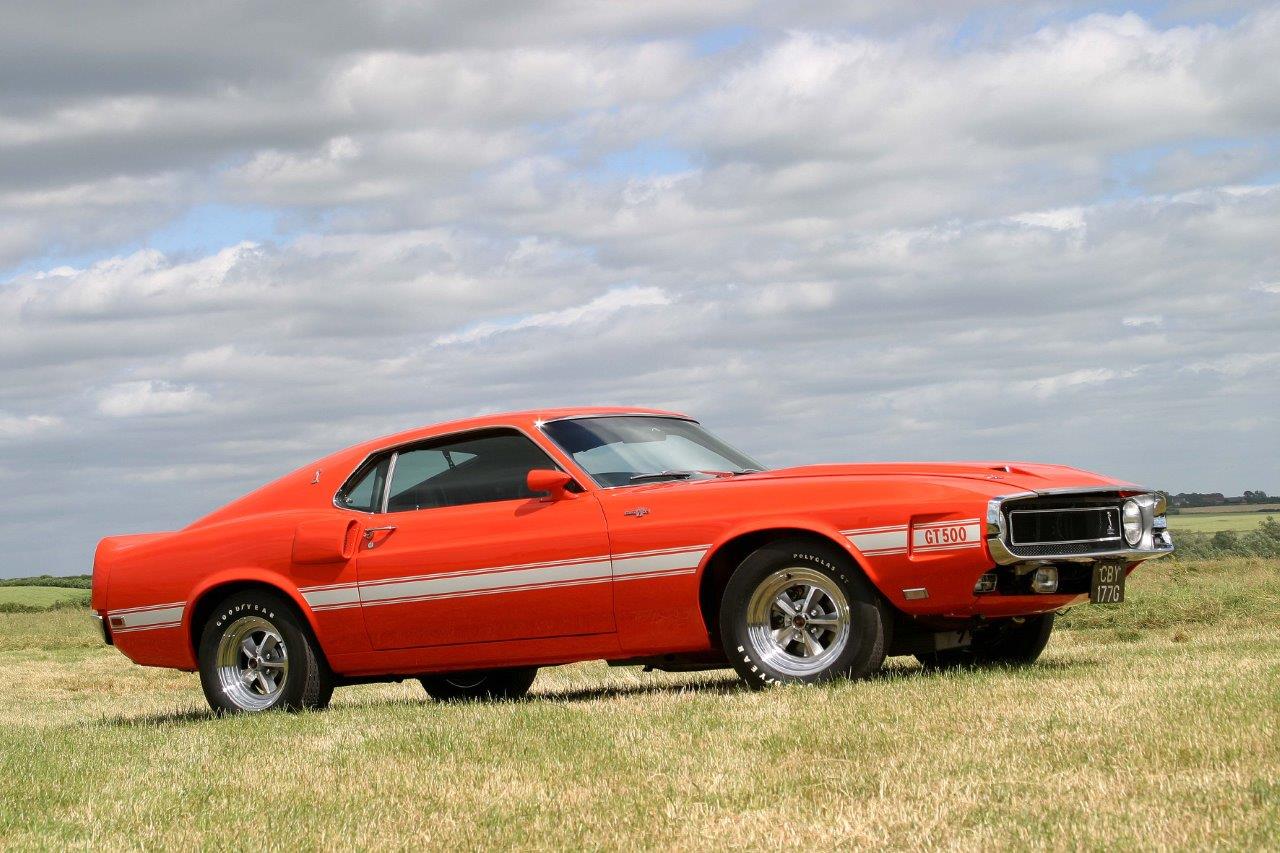
1969 Shelby Mustang GT500
By 1969, Carroll Shelby owned a substantial business that he created from scratch in 1962 when he unveiled his first production sports car, the infamous Shelby AC Cobra. Prior to his transformation into a businessman, he had been a successful professional racing driver who established his place in history when he won the Le Mans 24-Hours in 1959 at the wheel of an Aston Martin. Shortly afterwards, a heart condition forced him to retire from competitive racing which left him with the not inconsiderable problem of earning a living. As history recalls, the unique deal that involved obtaining cars from AC Cars Ltd and engines from Ford has passed into motoring folklore, but developing a relationship with a huge corporation such as Ford would soon bring its own problems.

At the time, the president and general manager of Ford was Lee Iacocca. He was concerned that Ford’s stuffy public image was having an adverse effect on the increasingly important youth market and, in an effort to rectify the situation, he decreed that in future, Ford’s slogan would be ‘Total Performance’ and Carroll Shelby was the man to drive the message home. One of the first of a new range of ‘sporty’ cars to be launched was the Mustang. It proved a huge success in terms of sales but was rejected by the Sports Car Club of America when Ford attempted to race it. Iacocca contacted Carroll Shelby with an instruction to turn the Mustang into a race car. At the time, Shelby American was busy bolting together the Cobra and had been instructed to turn Fords fragile endurance race car, the GT40, into a winner and was advised that failure was not an option. Shelby hardly had time to worry about the Mustang, but he contacted the right people at SCCA and politely asked what was needed in order for them to accept the car. It was soon established that it had to be a two-seater and one hundred examples would have to be built. Whether or not Shelby wanted to take on the project of building a performance version of the Mustang, Ford made the decision for him. As a result, Shelby American outgrew its small workshop facility and in March 1965 the company moved into two large aircraft hangars within Los Angeles airport in order to cope with the influx of Ford Mustangs destined to be transformed into Shelby Mustangs. After just three years, Shelby American had grown into a large company which led to Ford taking increasing control.

The Shelby Mustangs built during 1965 and 1966 were the basis of a successful race car, but for 1967 the model underwent a substantial re-design with the result that the car became bigger and heavier. In 1969 it grew even larger and was no longer the type of car Shelby wanted to build. The nature of Shelby American’s business was changing since, by 1967, the Cobra had ceased production and the Ford GT40 had fulfilled its dual purpose of winning Le Mans and beating Ferrari. Within Ford, politics were never far from the surface: Shelby had his supporters within Dearborn but there were many who envied his success and influence. With the closure of the Ford GT programme, the Shelby racing operation was scaled down and at the end of 1967 Shelby American vacated its Los Angeles premises. Sales of the 1968 Shelby Mustang would be handled from new offices in Michigan, where future cars would be constructed on the production lines of the A.O.Smith Company. To Carroll Shelby, this must have felt like the beginning of the end since it coincided with new legislation that would emasculate the huge V8 engines and rising insurance rates harmed the once lucrative youth market. In addition, Ford began to produce its own performance Mustangs, the Boss 302, 429 and Mach 1 which would take sales away from Shelby.

Rather than continue building an undesirable car that reflected badly on his reputation, Shelby asked to be released from his contract. The 1969 model year was the last hurrah of the Shelby Mustang and, instead of gearing up for 1970, the business closed. During 1969, 2361 Mustangs were built but a number of cars remained in the pipeline. The last 789 cars were lightly modified and re-branded as 1970 models, mainly to keep the dealers happy.

The 1969 Shelby Mustang saw several new modifications, notably a re-styled, elongated nose section and a bonnet that incorporated five air ducts; three inlets at the front and two outlets at the rear to allow hot air to escape. The car was available with a choice of two engines, the GT350 with a 351 cubic inch, 290bhp unit, or the GT500 that used the mighty 428 cubic inch Cobra Jet 335bhp motor. Shelbys’ company car was one of 1,534 GT500’s that came with a $4,709 price ticket.
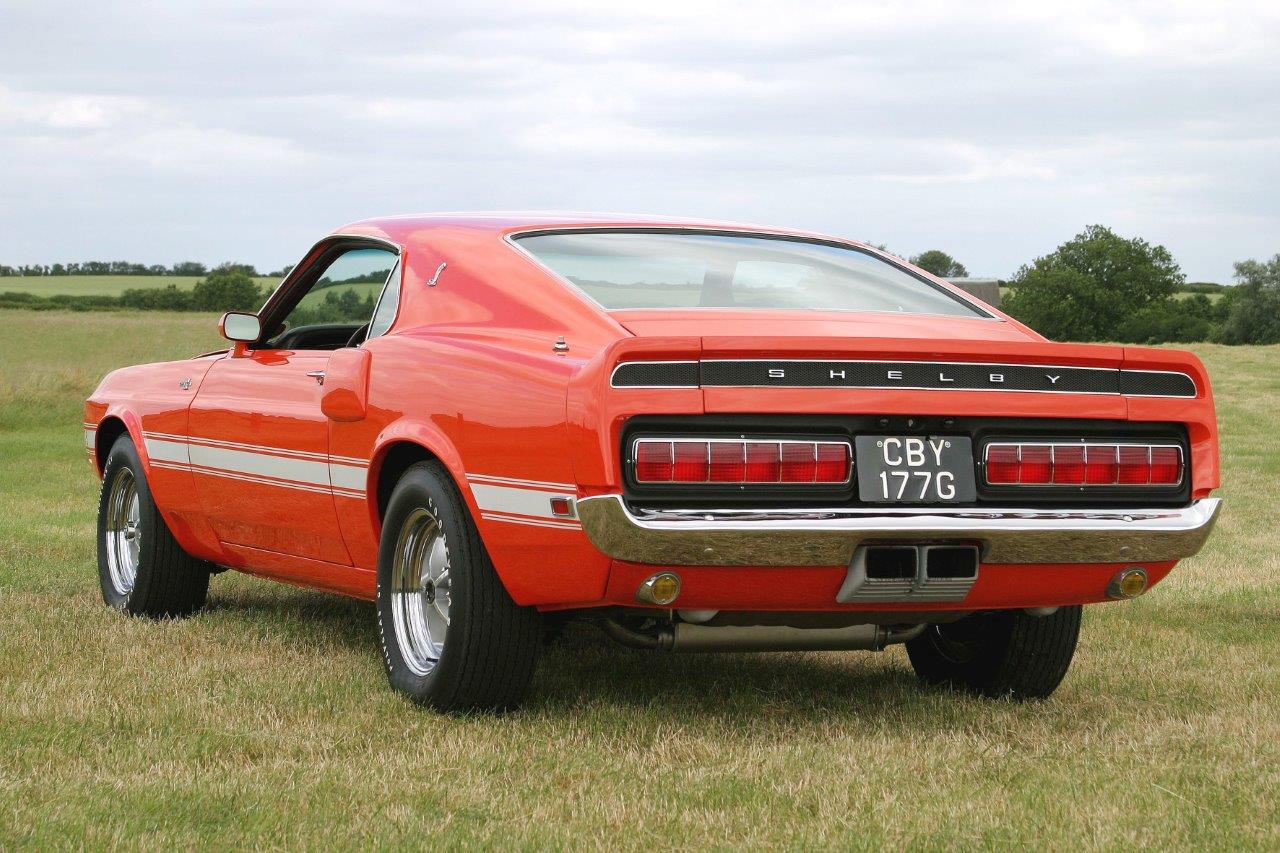
3162 was originally shipped to a Shelby dealership in Lake Tahoe before it arrived at the premises of Shelby Racing Co. in Torrance, California as Shelby’s personal transport. Eventually it changed hands a few times before being advertised for sale in London during 1989. It found a new home in Germany, returning to the UK a few years later. After approximately ten years, the car was tracked down by a wealthy collector; a deal was agreed and the car changed hands once again. Since the new owner had the necessary funds to return the 30-year old Mustang to its former glory, he commissioned a full restoration.

There are numerous automotive restoration businesses based in the UK, all of whom are capable of top quality work, but for this car and owner, only the very best was good enough, which resulted in the Shelby being delivered to an anonymous farm building tucked away in the English countryside. Trading under the name Dragon Wheels, Alan Faulkner-Stevens is an ex-Aston Martin engineer based in a quiet country village not far from Newport Pagnell. His speciality is returning classic American cars back to original factory standards and, although he out-sources some of the specialist tasks such as paintwork, he works to a level of perfection that many engineers can only dream about. Not only does he restore a car from the ground up, but wherever possible sources original parts or parts made to the correct specification. Every part of the car has to be correct, from the wiring loom to the carpet in the boot. In the case of this GT500, Alan spent eighteen months searching for a small ‘idiot’ light that warned the driver to buckle his seat belt. It was missing from its location under the dash so the car could not be signed off as finished until it had been located and restored to full working order. For this reason, his restoration jobs take years, not months, so customers have to book a space in his overflowing diary, then sit back and wait until he can give their car his full attention.
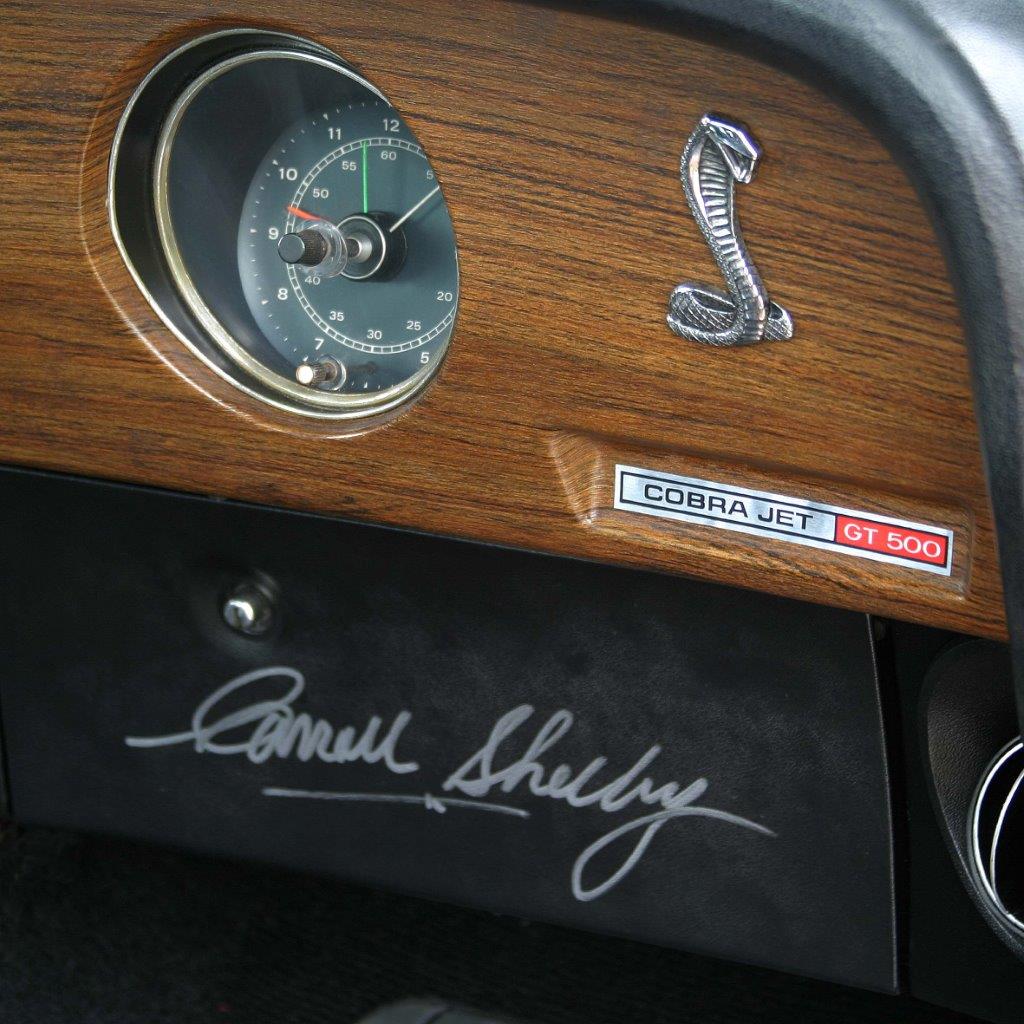
The GT500 spent almost three years in the Dragon Wheels workshop and, when the dustsheet is pulled carefully back to reveal the bright orange bodywork, it is immediately obvious that countless hours have been invested to produce this example of automotive perfection. There is little point in inspecting the car in close detail in the hope of finding faults – there are none. Whether or not one approves of the appearance of the final Shelby Mustangs, its sheer presence commands respect. Regardless of how perfect any car may be, its rightful place is on the road, in action. It requires several miles beneath its wheels to get the fluids to their correct temperatures but the engine is happy to idle comfortably. As it leaves the workshop, its substantial 6-foot (1.82m) width is immediately apparent as it threads its way along the narrow lanes of the village. Once the cottages give way to countryside, the road widens a little and a reasonable straight appears. A small application of throttle causes the nose to rise, the engine note deepens and the car gathers speed in an effortless surge. However, since the suspension is just as it was in 1969, it is evident that the car was designed for straight, smooth American highways. On English country roads, it feels like a 30-year old car as it bucks, jiggles and fidgets continuously, which does little to inspire confidence and promotes a healthy degree of caution.
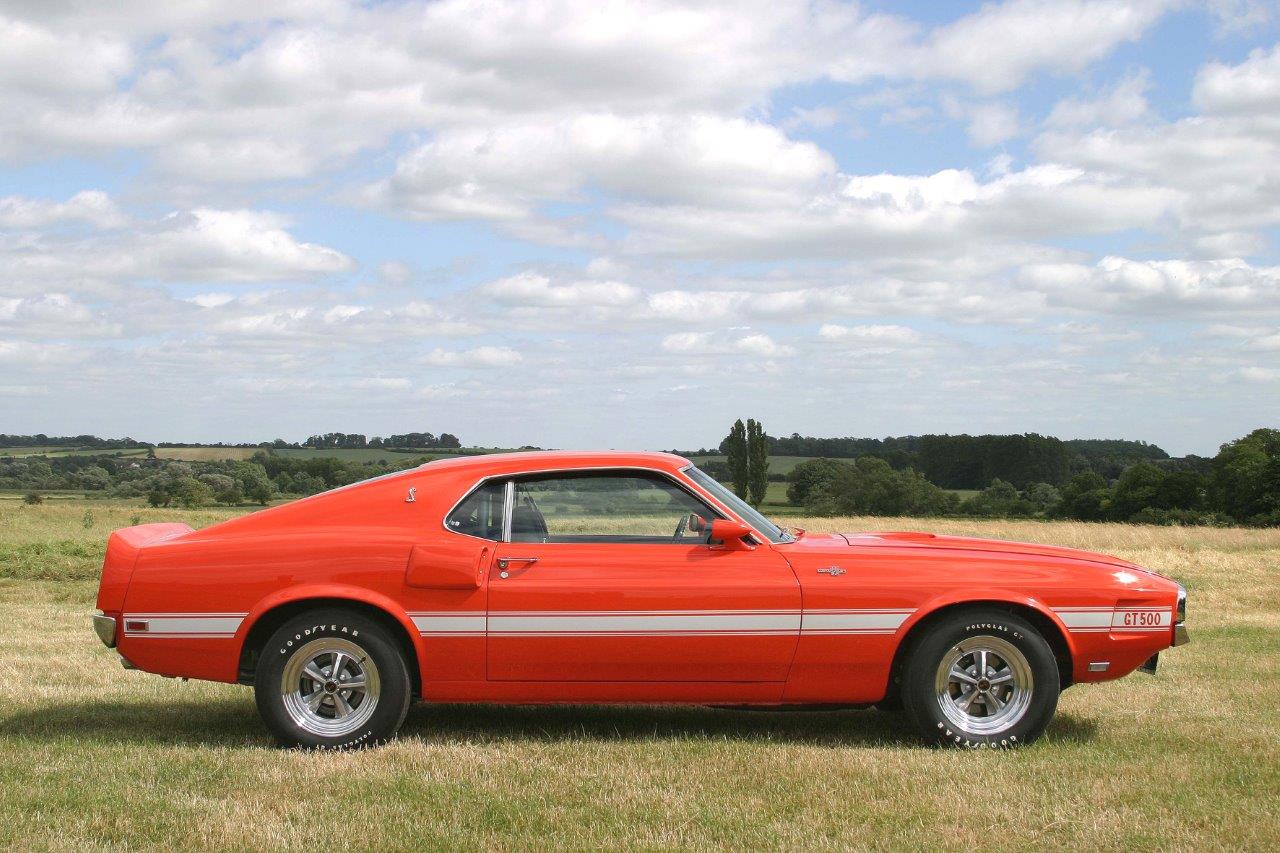
There is little doubt that on the right road the 3600lb (1633kg) car could match its original performance figures of 0-60mph in 6.3 seconds, with 100mph arriving in 17.1 seconds. It was geared for acceleration since the huge engine could only muster a top speed of 119mph at 6100rpm. There was a time and a place for such an automobile but it’s not hard to imagine tooling around southern California, circa 1970, behind the wheel of such an impressive company car.











